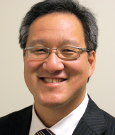In November 2013, ASCO initiated the development of CancerLinQ, a learning health system designed to transform cancer care and improve outcomes. At this year’s Quality Care Symposium in Boston, ASCO President Peter Paul Yu, MD, FACP, FASCO, Director of Cancer Research at the Palo Alto Medical Foundation, highlighted the work that has been done on the project and outlined future plans.
“So far at the meeting, we’ve heard a lot about different data repositories on the national, state, federal, and hospital levels. They all represent different collection sources in our data ecosystem. However, CancerLinQ represents the data collected from electronic health records in practitioners’ offices,” said Dr. Yu. He added that the CancerLinQ data “are vitally important because we practitioners are the main interface between patients and the health-care system, and the information in our health records constitutes the foundational data that other data sources are derived from.”
He explained that although CancerLinQ endeavors to provide a mechanism to aggregate massive amounts of data from electronic health records across the country into one repository, that goal alone would not be enough justification for ASCO to take on such an ambitious and difficult project. “CancerLinQ is really a rapid-learning health system. The concept is to upload data from the point of care into CancerLinQ and allow the data to be aggregated and studied by and on behalf of the provider. This generates insights and, ultimately, new learning that yields services to the provider and patient in the form of reports and clinical decision support tools. This process helps to power quality improvement in real time,” said Dr. Yu.
Moreover, CancerLinQ allows data exploration of real-world clinical issues and may offer new understanding of treatment variations. “Clinical trials data are very important and granular but often don’t represent patient populations in the real world. This process will accelerate our development of guidelines and other clinical decision support tools,” noted Dr. Yu.
Could Such a System Work?
Dr. Yu explained that to test the concept, ASCO built a prototype 2 years ago. “Frankly, we didn’t know if this system was actually doable. No one had approached this type of rapid-learning health system before. It was a challenge that came out of the Institute of Medicine, and we took it up,” said Dr. Yu. He explained that while building the prototype, the team decided to limit its work to one disease site—breast cancer.
He continued, “We populated the prototype with more than 170,000 de-identified cases of breast cancer from the electronic health records of five different practices. This first step showed us that we could ingest data from multiple electronic sources. After that, we began to conduct preliminary analyses of the data, which showed us that not only could we collect data, we could make observations from it as well.”
FDA Testing Grounds
The ASCO team next went to the U.S. Food and Drug Administration (FDA) and presented its work. “The FDA felt our work was intriguing since they really don’t have a lot of data on drugs they approve once they’re released into the real world. They asked us to tell them about the use of erythropoietin-stimulating agents after the Agency changed its policy on their indication,” said Dr. Yu.
“We analyzed the use of [erythropoietin-stimulating agents] in 8,300 breast cancer cases, and we could see that there was a trend developing even before the FDA changed its labeling and guidance on their use. Use of [erythropoietin-stimulating agents] declined markedly once the FDA’s labeling change went public. We also looked at the hemoglobin level that doctors were targeting before and after the FDA’s labeling change on these drugs, and that, too, dropped considerably after the FDA’s new labeling change went public,” said Dr. Yu. “So using CancerLinQ analysis, we were indeed able to tell the FDA about [erythropoietin-stimulating agent] usage in the real world.”
The Next Step
On the merit of this early success, the ASCO Board was encouraged enough to move to a production model. “The first step was an extensive requirement-gathering process to find out exactly what information would be useful to clinicians. To that end, more than 1,000 ‘user stories’ were submitted by ASCO members, who told us what they wanted from CancerLinQ. We then distilled these data into 13 detailed user scenarios, from which we crafted a request for proposal that we issued to the technology industry, asking if they could build a platform with this information and how much it would cost,” said Dr. Yu.
The ASCO team received 10 consortia responses involving 50 technology companies. “We also needed to talk to oncologists and see if they’d be willing to work with us. At this point, we have a memorandum of understanding signed by 15 vanguard practices across the country that will share their data in CancerLinQ,” said Dr. Yu.
The CancerLinQ team was advised by volunteers on several committees including data governance, technology, physician practice, patient advocate, and business development. “The concept is to collect the [electronic medical record] and practice management data from the 15 vanguard practices, which will comprise both structured fields and unstructured fields (such as physician notes). We can then analyze this wealth of clinical information,” said Dr. Yu.
Clinical Decision Support
Dr. Yu stressed that one ultimate goal of CancerLinQ is to provide real-time clinical decision support. By having the capability to process specific patient characteristics and compare them to outcomes from comparable patients, CancerLinQ will allow the practitioner to offer a personalized diagnosis and treatment plan based on real-world evidence in addition to published clinical trial data. CancerLinQ can also offer prompts to improve quality, such as oncology drug-related interactions.
“Our pilot program shows that such a learning health system will work. Based on our platform development work this year, we plan to debut a functioning CancerLinQ system in 2015,” concluded Dr. Yu. ■
Disclosure: Dr. Yu is the President of ASCO for 2014–2015.


